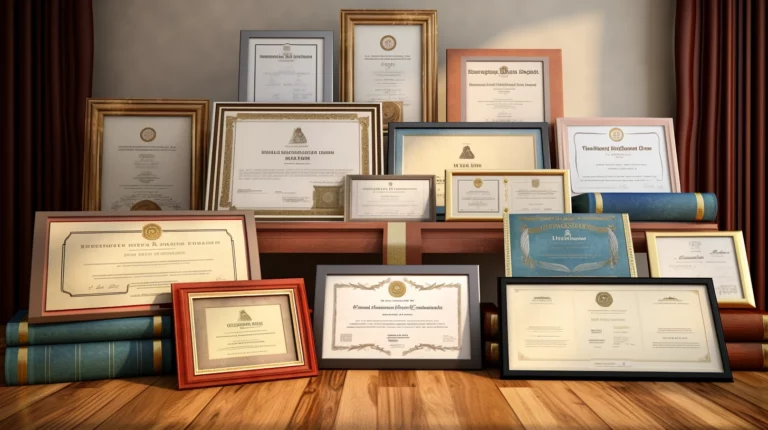Designing attractive templates is essential for creating visually appealing and impactful certificates. A well-designed template can enhance the overall aesthetic appeal, professionalism, and memorability of the certificate. In this article, we explore key tips and considerations for designing attractive templates that captivate recipients and reflect the purpose and significance of the certificate.
1. Define the Purpose and Tone: Understand the purpose of the certificate and the intended tone or mood. Whether it’s a formal academic certificate or a fun recognition award, align the design elements, colors, and typography to match the desired tone.
2. Choose a Clean and Balanced Layout: Opt for a clean and balanced layout that allows the information to be easily read and understood. Use grid systems or guidelines to ensure proper alignment of text, images, and other elements.
3. Use Appropriate Colors: Select a color palette that aligns with the purpose of the certificate and conveys the desired emotions. Consider using the organization’s branding colors or colors associated with the field or theme of the certificate. Use colors strategically to create visual hierarchy and emphasize important elements.
4. Typography Matters: Choose fonts that are legible, professional, and reflect the overall tone of the certificate. Consider pairing fonts with contrasting styles (e.g., a bold title font with a simpler body font) to create visual interest and hierarchy. Ensure proper spacing and alignment of text to maintain readability.
5. Incorporate Visual Elements: Add relevant visual elements to enhance the design. This can include decorative borders, icons, illustrations, or images that complement the purpose of the certificate. Use these elements sparingly and strategically to avoid overwhelming the design.
6. Personalize with Recipient Details: Make the certificate more meaningful and personalized by including recipient details such as their name, date of completion, or specific achievements. Customize the template to incorporate these details in an aesthetically pleasing manner.
7. Balance Negative Space: Incorporate enough negative space (also known as white space) to create a visually balanced and uncluttered design. Negative space helps guide the viewer’s attention and enhances the overall readability and focus on important elements.
8. Consistent Branding: If creating certificates for an organization, ensure consistency with the organization’s branding guidelines. Use the organization’s logo, colors, and typography to reinforce brand recognition and maintain a professional and cohesive look.
9. Test and Iterate: Before finalizing the template, test it across different devices and resolutions to ensure that it maintains its visual appeal and legibility. Seek feedback from others and make necessary iterations to improve the design.
10. High-Quality Output: When exporting or printing the certificate, ensure high-resolution output to maintain the visual integrity of the design. Pay attention to the file format and size requirements to ensure optimal quality.
By following these design principles and considerations, you can create attractive certificate templates that leave a lasting impression on recipients. Remember to strike a balance between aesthetics and functionality, tailor the design to the purpose of the certificate, and keep the overall visual experience pleasant and engaging.

